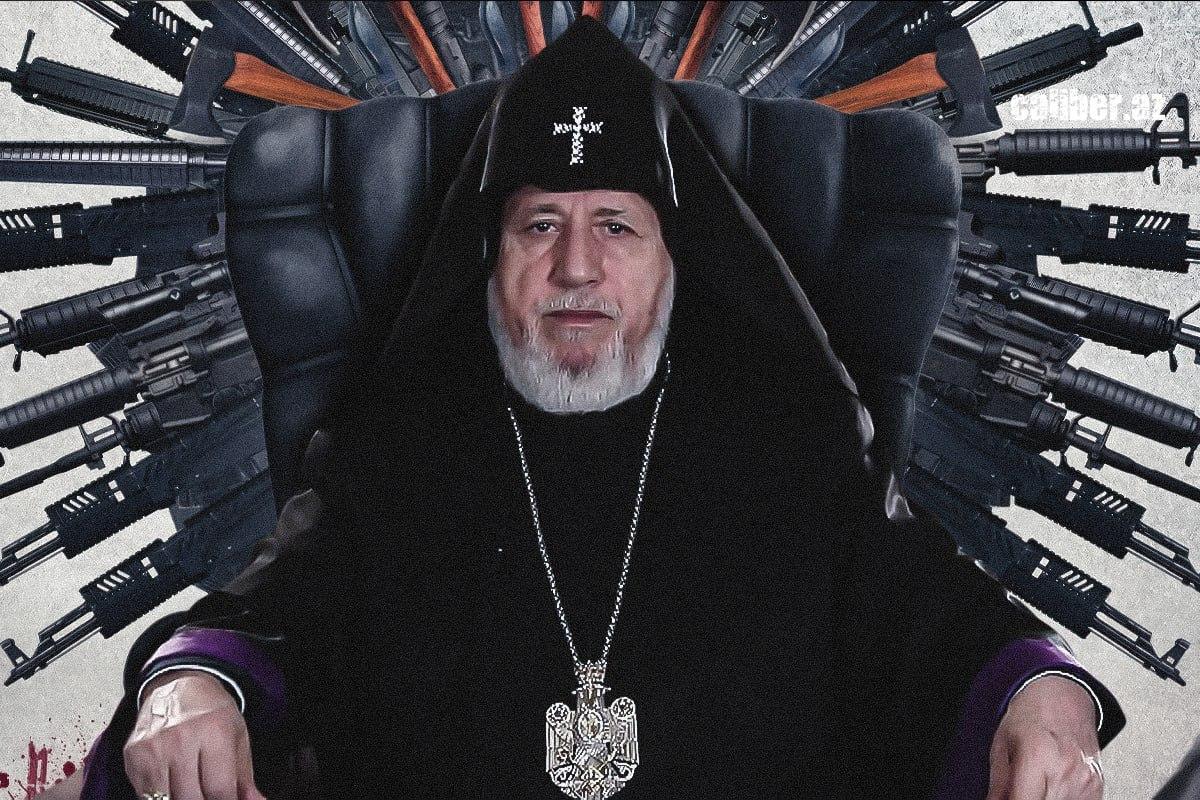Catholicos of discord Garegin II returns to the path of war
One of the staunchest proponents and advocates of revanchism—Catholicos of All Armenians Garegin II—during a recent meeting with Pope Leo XIV in the Vatican once again voiced a series of provocative statements against Azerbaijan. The head of the Armenian Church, not deviating in the slightest from his vile tradition, once again sang the old tune about “the expulsion of Karabakh Armenians, the destruction of Armenian spiritual and cultural heritage in Karabakh, and Armenian prisoners of war held in Baku’s prisons.”
In fact, there is nothing surprising about this. Such narratives appear in the agenda of Armenian revanchists with remarkable consistency. At the forefront of this disgraceful campaign is Garegin II, who has repeatedly used various platforms to spread his tales.
No need to look far—here is a “recent” example: at the beginning of September, during an interfaith conference marking the 1,700th anniversary of the First Council of Nicaea, he ranted that “Armenian cultural and religious heritage is being destroyed in Karabakh, monuments and centuries-old shrines are being ruined,” speaking of “ethnic cleansing of over 100,000 Armenians in Karabakh.”
However, in the case of his visit to the Vatican, what is striking is the fact that a church official—especially one holding the rank of Catholicos—did not hesitate to openly lie within the walls of the Holy See. Although what moral qualities could one expect from Garegin II, who in his Easter message, once again calling “the occupation of Karabakh and the forced deportation of its population a genocide,” expressed confidence that “the Armenian people, relying on unshakable faith, will endure trials and be reborn.”
In plain language, the All-Armenian shepherd essentially called for a new war, and, consequently, for the overthrow of the legitimate authorities, who, as is known, have pursued the goal of establishing lasting peace with their regional neighbours. According to the Catholicos, it is precisely the actions of these authorities that pose “a threat not only to the Church but also to Armenian statehood itself,” as he stated during a meeting with representatives of the “Five Human Rights Advocates” initiative in August of this year.
Even the laziest observer has heard of the conflict between Armenian Prime Minister Nikol Pashinyan and Garegin II, although, to be honest, they were never really allies. The Armenian prime minister criticised the church hierarchy for its close ties with previous authorities, while the Armenian Apostolic Church, after the rise to power of the “Western-backed” leader, did not hide its antipathy toward him.
However, relations between them completely deteriorated after Armenia’s defeat in the Second Karabakh War. At that time, Garegin II blamed Pashinyan and called for his resignation. Since then, the confrontation between the government and the church has only intensified, reaching its peak this year, when the sides resorted to mutual insults. Later, the Prime Minister called for Garegin’s resignation and, as it turns out, intends to see the matter through to the end.
“My position regarding the Armenian Apostolic Holy Church has not changed and cannot change under any circumstances. Ktrich Nersisyan (the secular name of Garegin II) must leave the Patriarchal chambers,” Pashinyan stated in August.

Taking all of the above into account, it is clear that the head of the Armenian Apostolic Church has set himself two objectives: first, to continue promoting revanchist ideas, and second, to constantly discredit the current authorities, both within Armenia and abroad. To achieve these goals, he uses every platform, method, and means available to him.
For example, the Catholicos visited the Eastern American Diocese of the Armenian Apostolic Church on 8 August this year—coinciding exactly with the historic meeting in Washington between the leaders of Azerbaijan and Armenia and the U.S. President. It is therefore highly likely that, during his meeting at the Vatican with the pontiff and other official representatives of the Holy See, Garegin, alongside attempts to portray Azerbaijan as the aggressor, also expressed serious dissatisfaction with the policies of the current Armenian authorities.
Undoubtedly, such deliberate subversive activity by the Catholicos somewhat complicates the Prime Minister’s task of advancing a peace agenda. However—what is very important and telling—is that following the Washington negotiations, no political upheavals, such as protests, occurred in Armenia, indicating the people’s trust both in the government and personally in the Prime Minister.
At the same time, it would be a mistake to discount the fact that, before the parliamentary elections scheduled for June 2026, Pashinyan’s political opponents will likely attempt more than once to stir domestic unrest in Armenia.
On the other hand, the recent steps taken by Nikol Pashinyan demonstrate his determined focus on signing a final peace agreement with Baku. Moreover, as noted above, the Prime Minister does not intend to abandon the idea of removing Garegin II and has even identified a candidate for the new Catholicos.
This resolve on the part of Armenia’s Prime Minister gives reason to hope that the referendum on constitutional amendments—intended to definitively settle territorial claims against Azerbaijan—will take place as planned and conclude with a positive outcome. As for Garegin II, there are clear indications that this visit to the Vatican could very well be his last in that capacity.








